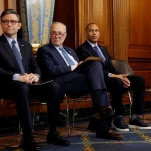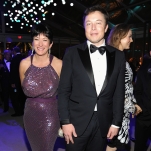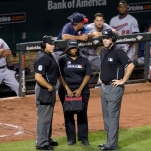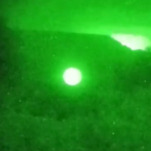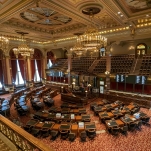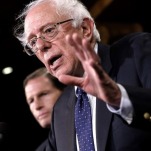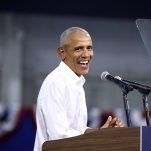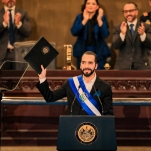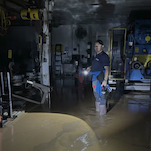Could Will and Kate's new baby suffer from Second Royal Syndrome?
Kate Middleton, the Duchess of Cambridge and wife to Prince William, is expected to give birth to her second child in mid- to late April. When Baby Cambridge #2 makes his or her royal entrance, big brother Prince George will be 21 months old. After his grandfather and father, George is third in line to the British throne, and his future younger sibling will be fourth.
Will and Kate have proven themselves to be sane, protective parents, and their genetic material clearly combines in an adorable fashion. (This reporter’s feelings about Prince George are a matter of public record.) Nevertheless, we’re worried about this baby. The second sons and daughters of monarchs and monarchs-to-be — their so-called “spare heirs” — tend to lead lives marred by misfortune and misbehavior.
This family portrait, taken on the occasion of Prince Harry’s christening in 1984, beautifully sums up the spare heir experience.
It may be Harry’s baptism, but the unequivocal star of the day is two-year-old Prince William, seen squatting in front of his grandmother.
Now 30, Prince Harry has seemingly transformed into a fully functional adult, but his is a textbook case of Second Royal Syndrome. Harry’s royal duties have historically included underage drinking, smoking weed with his friends, and removing his clothes at parties in Las Vegas.
-

-

-

-

-

-

-

-

-

-

-

-

-

-

-

-

-

-

-

-

-

-

-

-

-

-

-

-

-

-

-

-

-

-

-

-

-

-

-

-

-

-

-

-

-

-

-

-

-

-

-

-

-

-

-

-

-

-

-

-

-

-

-

-

-

-

-

-

-

-

-

-

-

-

-

-

-

-

-

-

-

-

-

-

-

-

-

-

-

-

-

-

-

-

-

-

-

-

-

-

-

-

-

-

-

-

-

-







